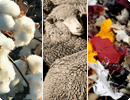
CLOTHING – THE CHOICES WE MAKE

All energy, material, and process inputs come from renewable or recycled sources;
All materials are capable of returning safely to either natural (biological nutrient) or industrial (technical nutrient) systems;
All stages in the product lifecycle actively support the reuse or recycling of these materials at the highest possible level of quality;
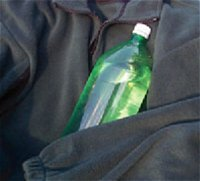 COSPUN
COSPUN
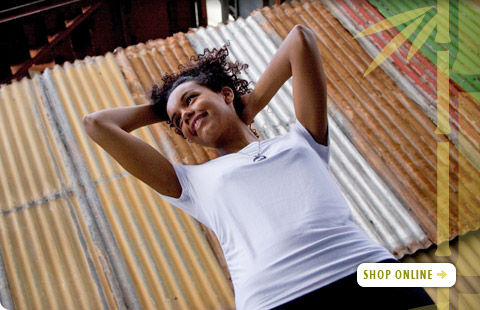 AMBOO
fabric is made from bamboo plants which are the
fastest growing woody plants, and one of the most sustainable and
renewable resources in the world.
AMBOO
fabric is made from bamboo plants which are the
fastest growing woody plants, and one of the most sustainable and
renewable resources in the world.
A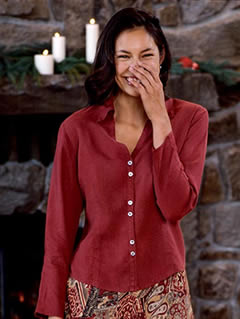 s
the fastest growing plant in the world, bamboo grows to its maximum
height in about 3 months and reaches maturity in 3-4 years. It
spreads rapidly across large areas. Because of this, bamboo is known
to improve soil quality in degraded and eroded areas of land.
Bamboo is 100% sustainable
s
the fastest growing plant in the world, bamboo grows to its maximum
height in about 3 months and reaches maturity in 3-4 years. It
spreads rapidly across large areas. Because of this, bamboo is known
to improve soil quality in degraded and eroded areas of land.
Bamboo is 100% sustainable
LYOCELL
A cellulosic fiber made from wood pulp, also known as tencel®.
It is produced by a special spinning process that uses recyclable
non-toxic slovents. This process makes it ecologically sound. Lyocell
is also very fashionable due to its luxurious hand, drape, and
comfortable feel on the body B8_s4_3
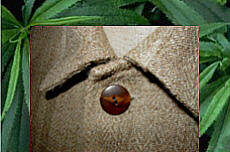 EMP
EMPHemp is a very eco-friendly crop. It requires no pesticides and needs little water, yet it renews the soil with each growth cycle.
It's long roots prevent erosion and help retain topsoil.
Strong:
Clothing made of hemp fiber is lightweight, absorbant and, with three
times the tensile strength of cotton, strong and longlasting.
Weather Resistant: UV and mold-resistant, hemp is excellent for outdoor wear.
Versatile: Hemp can be blended with other fibers for different qualities in the garment. Hemp/silk and hemp/cotton garments are now available.
Cost-Effective: Hemp is less expensive to farm because of its minimal growth requirements.
Easy on the Environment: Hemp farming uses very little water, does not require the use of chemical pesticides or fertilizers, and is a readily renewable resource.
Hemp is the most durable of natural fibers.
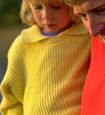 he
cellulose fiber from hemp is used to make many products, including
jeans, shirts, dresses, hats, bags, ropes and canvas, skin care
products, building materials, paper and many food products. Until the
1920's, 80% of clothing was made from hemp textiles.
he
cellulose fiber from hemp is used to make many products, including
jeans, shirts, dresses, hats, bags, ropes and canvas, skin care
products, building materials, paper and many food products. Until the
1920's, 80% of clothing was made from hemp textiles.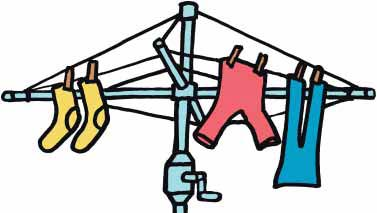 emp
produces at least three times more fiber per acre than cotton plants
and produces the most per acre of any other fiber source.
emp
produces at least three times more fiber per acre than cotton plants
and produces the most per acre of any other fiber source.
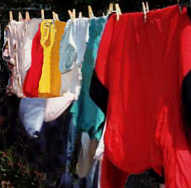
Drying a load of clothes in a dryer generates more than 3 kilograms of greenhouse gases.
Put them on the line or over a clothes rack!
Some dryers automatically sense when clothes are dry. These generally save more greenhouse gases than those controlled by a timer, which often over-dry clothes.
Spin-dry your clothes (on a highspin speed) to remove as much water as possible before you put them in the dryer – IF YOU MUST.
Save up to 2 kilograms of greenhouse gas per load by hanging clothes on a rack B8_s4_4
Using the washing machine effectively
C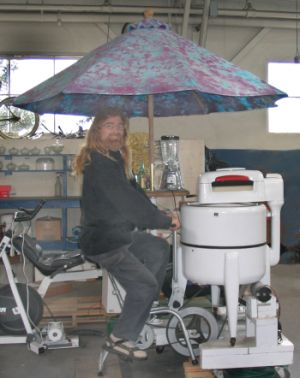 hoose
a washing machine size that suits your household.
hoose
a washing machine size that suits your household.
Wash clothes in cold water: you will generate less than a third of a kilogram of greenhouse gas per wash. Heating the water for a hot wash generates up to 4 kilograms of greenhouse gas.
Avoid washing more loads than necessary: washing a full load or a few socks generates almost the same amount of greenhouse gas.
Don’t waste detergent: it is expensive and making it generates about a third of a kilogram of greenhouse gas per wash for top-loaders—front-loaders use half as much.
Using hot water for washers is more expensive and has more impact on the environment
Using cold water will save 80 - 90% of the energy costs in washing.
Use Biodegradable laundry detergents ~ they are inexpensive, effective , readily available.
Avoid "Wash Separately" Clothes
Many new styles on the market have "wash separately" instructions on the care label.
Too much time, water and energy is spent maintaining these garments, and add to their cost. Consumer rejection can discourage their manufacture.
Permanent-Press
Clothing
Permanent-press clothing and no-iron bed
linens are treated with formaldehyde resin which becomes a permanent
part of the fiber. These impregnated fabrics "out-gas"
toxic formaldehyde fumes throughout the life of the garment.
S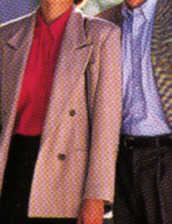 tyle
One of the main reasons we buy new clothing is 'style'
WHY?
tyle
One of the main reasons we buy new clothing is 'style'
WHY?
new styles are often short-lived and the garment is discarded long before it wears out.
Logo is style, and usually that style costs more. To offset the high marketing costs, workers' rights and environmental concerns are often compromised.
Recycled Thrift Shop Chic
Shopping for clothes at your local thrift shop can be fun, cheap-cheap-cheap, and often yields a fabulous discovery to add to your wardrobe.
buying second-hand clothing comes at no cost to the environment.
Children usually grow out of, rather than wear out their clothes, and thrift shops can often have a good selection of children's clothes.
And bring the kids to the thrift shop.....it's a good opportunity to teach them why you value used clothing. Teach them about the real costs of new clothing, and let them decide.
Remember to donate your own used clothing too.
B8_s4_5